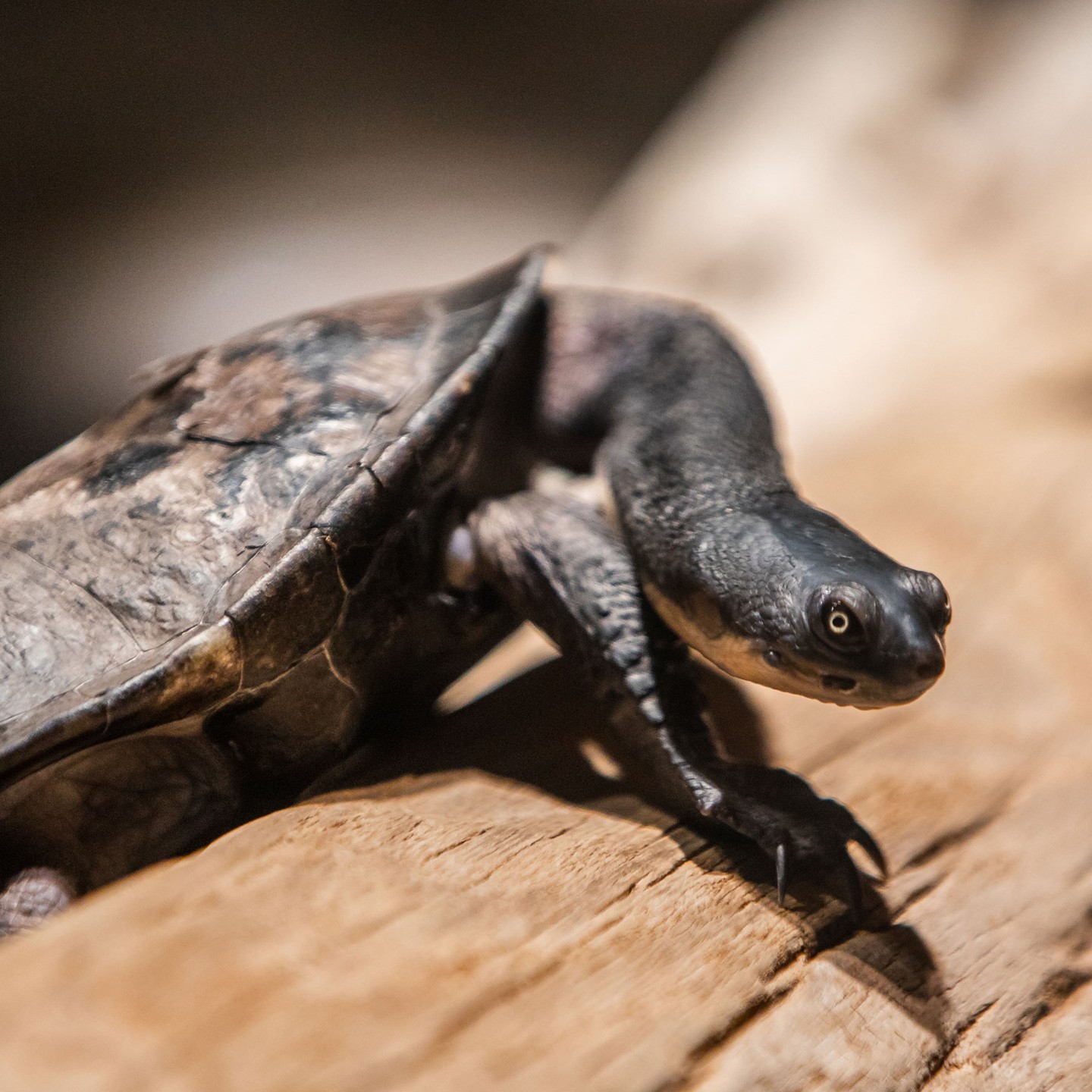Summary:
1. Introduction to the Eastern snake-necked turtle and its unique nickname, “stinker.”
2. The fascinating ability of these turtles to eject pungent gland secretions.
3. The anatomy and behavior of the Eastern snake-necked turtle.
4. How these turtles adapt to their environment and survive in the wild.
5. Australia: Wild Extremes exhibit and its importance in raising awareness about Australian wildlife.
Unveiling the Fascinating Stinker: The Eastern Snake-Necked Turtle
Imagine a turtle with a peculiar nickname. Meet the Eastern snake-necked turtle, a native Australian species that has acquired the affectionate moniker “stinker.” Why, you may wonder? Unraveling the mystery behind this unique title leads us to an intriguing discovery about the remarkable abilities of these reptiles. Hold tight as we dive into the fascinating world of the Eastern snake-necked turtle!
The Unforgettable Stench:
One fascinating aspect of the Eastern snake-necked turtle is its ability to release pungent gland secretions from unexpected areas such as its “armpits” and groin. When these turtles feel threatened or are handled roughly, they utilize this defense mechanism to startle potential predators or dissuade curious onlookers. The powerful aroma is a warning sign, giving these turtles a clever advantage when navigating their habitats.
Anatomy and Behavior:
Beyond their distinctive odor, Eastern snake-necked turtles have several unique characteristics that make them stand out. These reptiles possess a long neck resembling a snake, allowing them to reach for prey more efficiently in their aquatic environment. Their elongated snouts and sharp beaks aid in capturing fish and invertebrates, making them excellent hunters.
Furthermore, these turtles exhibit peculiar behavior when threatened. Instead of retracting their heads and limbs into their protective shells like most common turtles, Eastern snake-necked turtles fold their neck sideways beneath their shell. This remarkable adaptation allows them to blend seamlessly into their surroundings, evading potential threats and camouflaging themselves with the vegetation around them.
Adaptation and Survival:
Surviving in the wild can be challenging, but the Eastern snake-necked turtle boasts an array of adaptations that help them thrive in their Australian habitats. Being cold-blooded animals, these reptiles rely on their environment to regulate their body temperature. During colder seasons, they bury themselves in the mud or hide beneath rocks to conserve heat. Conversely, they bask in the sun in sweltering summers to absorb warmth.
The Eastern snake-necked turtle’s shell, known as the carapace, provides more than just protection. It also aids in regulating buoyancy. This remarkable adaptation allows them to effortlessly float in water bodies, conserving energy and seamlessly transitioning between aquatic and terrestrial environments.
Australia: Wild Extremes Exhibit:
To truly appreciate the wonders of the Eastern snake-necked turtle and other unique Australian wildlife, visit the Australia: Wild Extremes exhibit is a must! This incredible display showcases the country’s diverse ecosystems, introducing visitors to extraordinary animals, plants, and landscapes found nowhere else on Earth.
The Australia: Wild Extremes exhibit goes beyond entertainment, serving as a vital platform for raising awareness about the importance of wildlife conservation. By immersing visitors in the beauty and splendor of Australia’s rich biodiversity, this exhibit aims to instill a sense of responsibility toward protecting these remarkable creatures and their habitats.
Conclusion:
The Eastern snake-necked turtle, affectionately known as “stinker,” captivates our curiosity with its unique abilities, mesmerizing adaptations, and playful demeanor. From its pungent secretions to its snake-like appearance and remarkable survival strategies, this Australian native reminds us of the incredible diversity present in our natural world.
Through exhibits like Australia: Wild Extremes, we can connect with nature on a deeply personal level. Let these encounters motivate and inspire us to take action, ensuring the preservation of Australia’s wildlife for generations to come. So, the next time you encounter a “stinker,” remember to cherish the wonder it represents and embrace the awe-inspiring complexity of our natural world.
*****
Source Description
This Eastern snake-necked turtle, an Australian native, is often nicknamed “stinker.” When handled or disturbed, these turtles can eject pungent liquid gland secretions from their “armpits” and groin.
Learn more about our Australia: Wild Extremes exhibit at the link in our bio!

